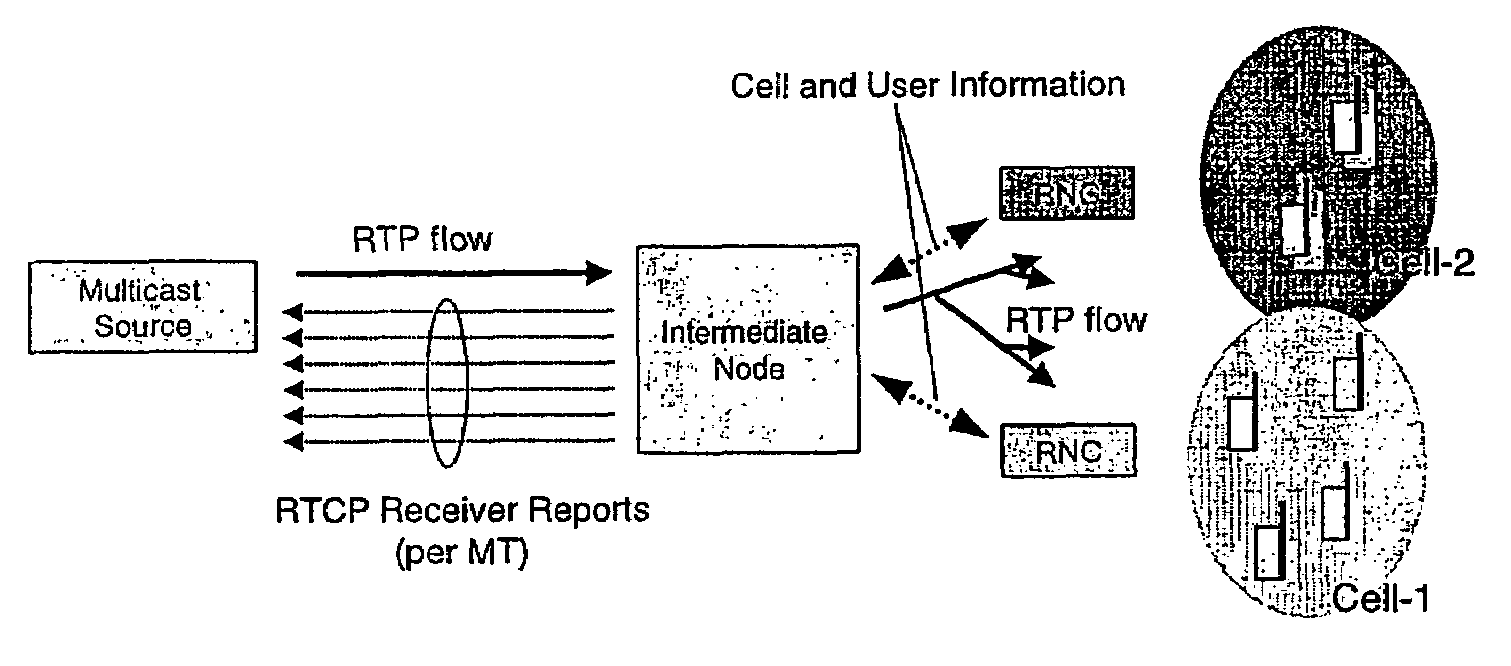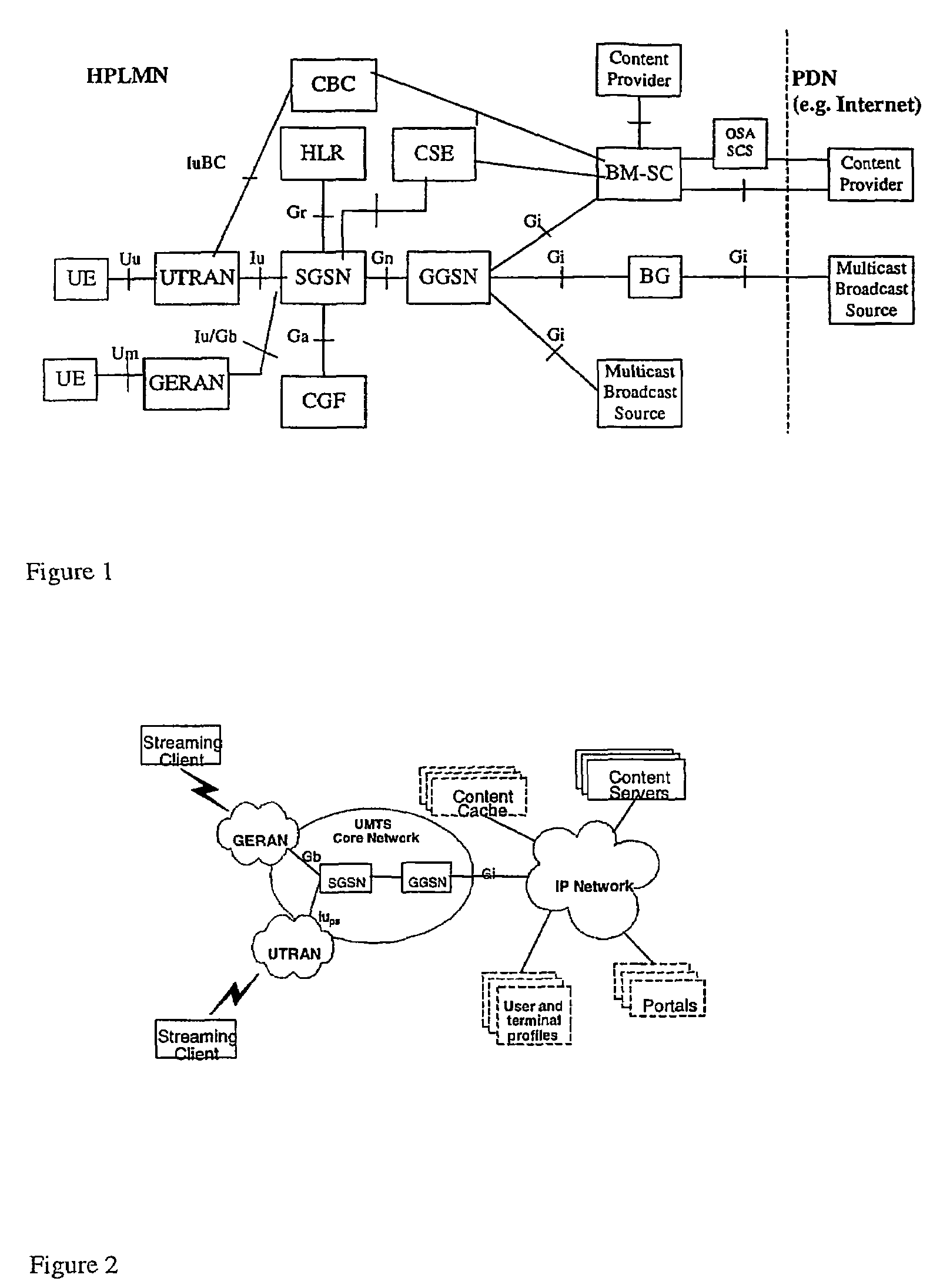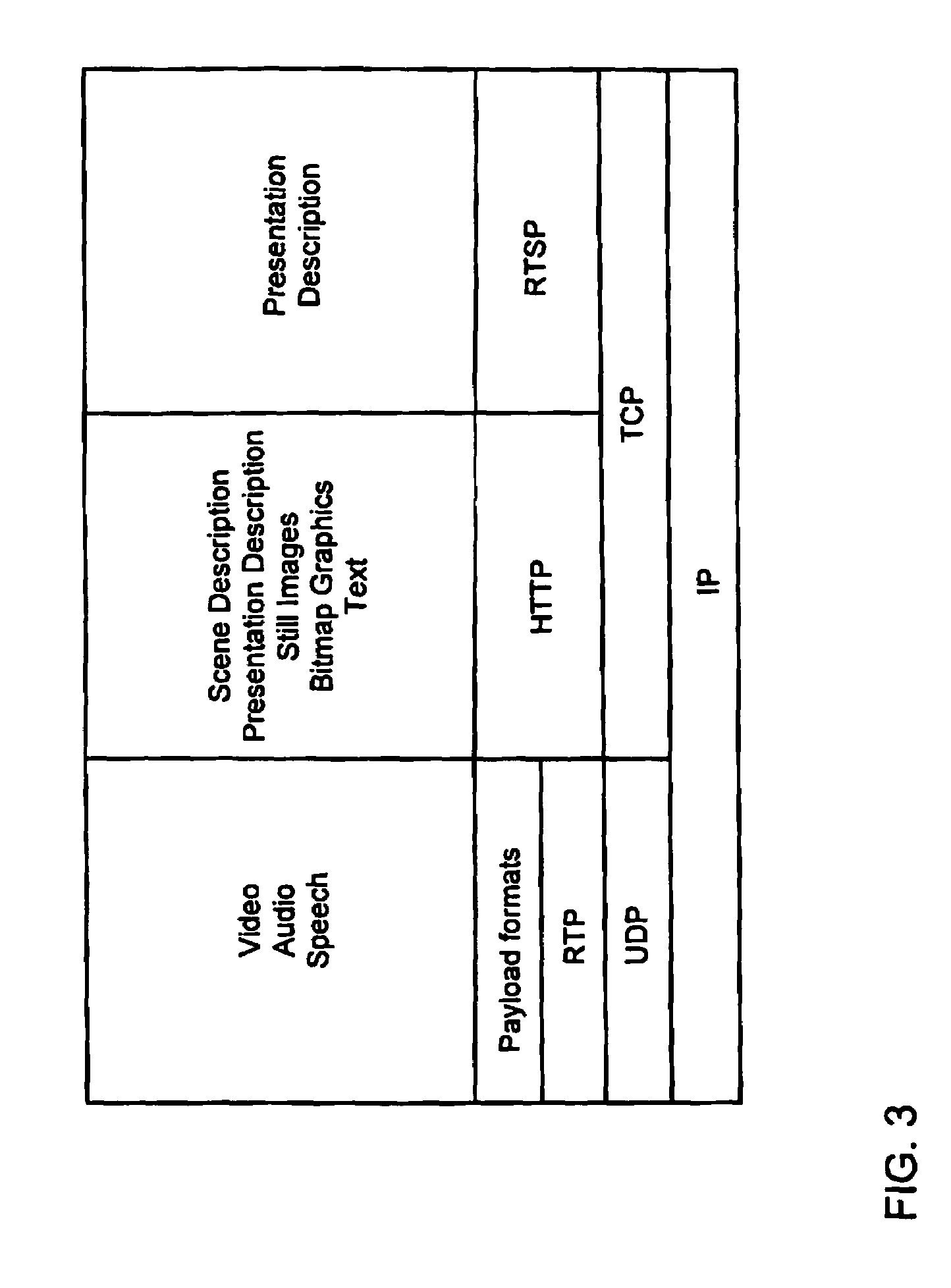Reporting for multi-user services in wireless networks
a wireless network and multi-user technology, applied in the field of communication networks, can solve problems such as waste of resources, achieve the effects of reducing load and complexity in the source, reducing resource waste, and efficient utilisation of scarce and expensive network resources
- Summary
- Abstract
- Description
- Claims
- Application Information
AI Technical Summary
Benefits of technology
Problems solved by technology
Method used
Image
Examples
first embodiment
[0085]In the first embodiment in the client generated RTCP messages are discarded in the client's terminal and generated from scratch in the intermediate node, like RNC. According to the RTP specification it is currently possible that the source indicates to the clients, that no RTCP receiver reporting shall be used. By receipt of this information the feedback messages in the clients are discarded or even not generated.
second embodiment
[0086]In the second embodiment it is foreseen that the generated RTCP messages in the clients are transmitted over the radio interface to the intermediate network part, but modified in said network part according to certain principles described below. The RTCP message interval for RTCP messages from the client can be larger than the RTCP message interval for RTCP messages from the intermediate node to the sender. The client may even send RTCP messages only event driven, for example when certain values are out of range.
[0087]The input for setting the different fields of the RR messages is the same as for the broadcast scenario. Even though for the multicast the following principles can be followed when setting the fields in the RR messages. The first principle that could be applied is when using a common transport channel in WCDMA, there will always be some receivers with poor channel conditions suffering from large packet loss, while others get good quality. The RNC could in this ca...
PUM
 Login to View More
Login to View More Abstract
Description
Claims
Application Information
 Login to View More
Login to View More - R&D
- Intellectual Property
- Life Sciences
- Materials
- Tech Scout
- Unparalleled Data Quality
- Higher Quality Content
- 60% Fewer Hallucinations
Browse by: Latest US Patents, China's latest patents, Technical Efficacy Thesaurus, Application Domain, Technology Topic, Popular Technical Reports.
© 2025 PatSnap. All rights reserved.Legal|Privacy policy|Modern Slavery Act Transparency Statement|Sitemap|About US| Contact US: help@patsnap.com



